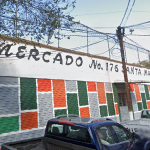
The Ticomán Cablebús station is the first stop on the length of Line 1. It provides much-needed transport relief to the Politécnico Metro station on the other side of the campus.
The station grows increasingly important for IPN students and workers. Still, most international visitors won’t be getting off at the Ticomán Cablebús station. The views are exceptional nonetheless.
 https://www.ste.cdmx.gob.mx/cablebus/cb-linea-1
https://www.ste.cdmx.gob.mx/cablebus/cb-linea-1

Nearest at 0.11 kms.

Nearest at 0.55 kms.

Nearest at 0.60 kms.

One of Mexico City's highest elevation neighborhoods...

New life arrives in one of original villages of la GAM, far in the north of Mexico City.

The transfer station for passengers en route to the final two destinations on Cablebús Line 1.

CablebúsLine One can leave you at the base of the famous Cerro del Chiquihuite...

Your first stop on the Cablebús adventure of the north...